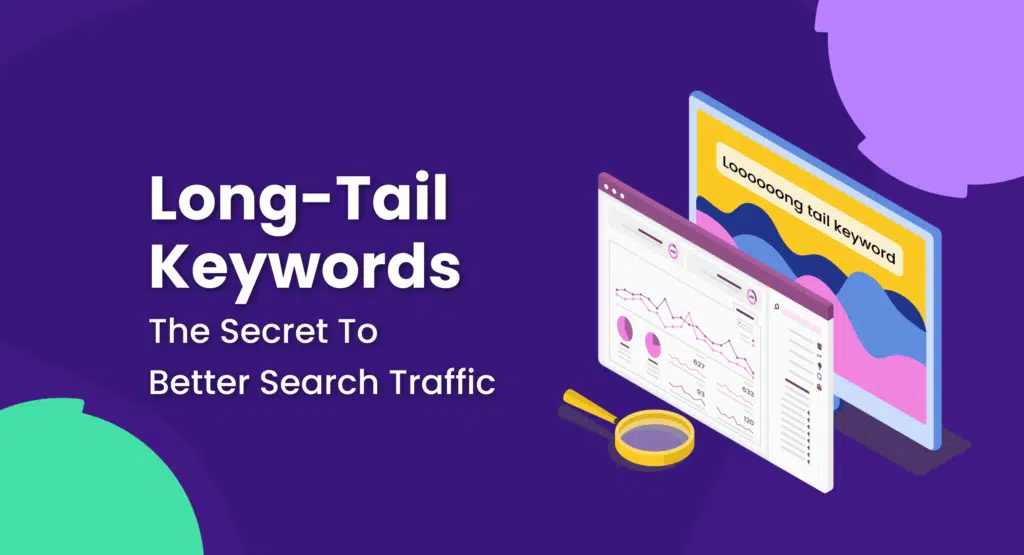In the competitive world of digital marketing, attracting quality traffic to your website is no longer just about ranking for a few broad keywords. Today, the key to sustainable SEO success lies in targeting specific search intent—something that long-tail keywords can help you achieve. For businesses in Melbourne, Australia, integrating long-tail keywords into your content strategy is a highly effective way to drive qualified leads, improve conversion rates, and stand out in an increasingly saturated market.
Unlike broad, one- or two-word keywords that tend to be high in competition and ambiguity, long-tail keywords are longer, more specific phrases that reflect exactly what a user is searching for. A typical long-tail keyword might look like “best vegan café in Fitzroy Melbourne” or “affordable email marketing services in Melbourne.” These phrases have lower search volume, but they make up for it with higher relevance and significantly better conversion potential.
Whether you're running a small business, managing an e-commerce store, or offering professional services in Melbourne, understanding how to find and use long-tail keywords can be the game-changer your SEO strategy needs. In this guide, we’ll break down what long-tail keywords are, why they matter, how to find them, and how to strategically include them in your website content to attract your ideal audience.
What Are Long-Tail Keywords and Why Should You Use Them?
Long-tail keywords are search queries that typically consist of three or more words and are highly specific. These keywords are used by people who are closer to making a purchase or taking a specific action. For example, someone searching “digital marketing” is still in the research phase. But someone searching “digital marketing consultant for small businesses in Melbourne” knows exactly what they want and is likely ready to act.
- Better Conversion Rates: Long-tail keywords drive traffic from users who are more likely to convert because they are searching with clear intent. They often lead to higher-quality leads and better ROI.
- Lower Competition: Since fewer websites target these highly specific phrases, it’s easier to rank on the first page of search results without needing massive domain authority or a large backlink profile.
- Improved User Experience: Targeted content that answers specific questions helps users quickly find what they’re looking for, increasing dwell time and lowering bounce rates.
- Voice Search Optimization: With the rise of voice assistants, more users are asking natural language queries—most of which are long-tail in nature.
How to Find the Right Long-Tail Keywords for Your Business
Finding the right long-tail keywords starts with understanding your audience’s needs, goals, and pain points. Here’s a step-by-step approach to uncovering profitable keyword opportunities:
- Use Keyword Research Tools: Start with tools like Google Keyword Planner, SEMrush, Ahrefs, or Ubersuggest. Enter a broad keyword and filter the results for longer, more specific phrases. Pay attention to search volume, keyword difficulty, and intent.
- Analyze Search Intent: Not all long-tail keywords lead to conversions. Choose keywords that align with your target customer’s goals. Informational phrases like “how to fix leaking tap in Melbourne” or transactional ones like “emergency plumber near me” can both be valuable, depending on your niche.
- Explore Google Suggestions: Type your main keyword into Google and look at the “People also ask” and “Searches related to” sections at the bottom. These are real long-tail searches made by users.
- Use Customer Language: Review customer reviews, support queries, or testimonials to identify how your audience describes your product or service in their own words. These can be a goldmine for long-tail keywords.
Where to Use Long-Tail Keywords in Your Website Content
Knowing your long-tail keywords is just half the battle—the real impact comes from using them strategically across your website. Here are the key areas where you should be placing long-tail keywords:
- Page Titles and Meta Descriptions: These are critical for SEO and can influence click-through rates. Use the exact long-tail phrase in both your title and meta tag.
- Header Tags (H1, H2, H3): Incorporating long-tail keywords into your headings helps Google understand your content structure and relevance.
- URL Slugs: Clean and keyword-rich URLs improve SEO and user trust. For example: /services/email-marketing-small-business-melbourne.
- Body Content: Naturally weave the keyword into your content without overstuffing. Focus on answering the query the user has typed into Google.
- Alt Text and Image Names: Help Google index your visual content by including long-tail keywords in image alt attributes and filenames.
Examples of Long-Tail Keywords for Local Businesses in Melbourne
If you're based in Melbourne, Australia, tailoring your keyword strategy to include geo-specific terms can make your content even more powerful. Here are some examples:
- “Affordable bookkeeping services for startups in Melbourne” – Targets business owners in the early stages of growth.
- “Best vegan restaurants in Brunswick Melbourne” – Focuses on local food niches and attracts highly interested visitors.
- “Emergency electrician available 24/7 Melbourne” – Perfect for trade service providers needing urgent work visibility.
- “Professional SEO agency for e-commerce in Melbourne” – Ideal for digital marketing and website specialists.
- “How to apply for a spouse visa in Australia from Melbourne” – Legal service example targeting a very specific question.
How to Create Content That Ranks for Long-Tail Keywords
To successfully rank for long-tail keywords, your content needs to be relevant, helpful, and optimized around the user's intent. Here’s how to build content that performs:
- Create Topic Clusters: Group related long-tail keywords into clusters and build multiple posts or pages around them. Link them internally to a broader “pillar” page to improve structure and topical authority.
- Answer Specific Questions: Use FAQ sections, how-to guides, or step-by-step tutorials that directly address what users are asking. The more value your content provides, the better it will perform in search results.
- Use Natural Language: Write like your audience speaks. Search engines now reward conversational and user-friendly content that aligns with voice search trends.
- Optimize for Mobile and Speed: Ensure your content loads quickly and is mobile-friendly. A great keyword strategy won’t help if users bounce due to poor usability.
Tracking the Success of Your Long-Tail Keyword Strategy
After implementing your long-tail keyword strategy, it’s important to track how well it’s working. Here are a few metrics and tools to keep an eye on:
- Google Search Console: Monitor which long-tail keywords are driving impressions and clicks. Use this data to update or expand content.
- Google Analytics: Track traffic sources, bounce rates, and conversion goals to see which pages are performing best.
- Heatmaps and Session Recordings: Tools like Hotjar or Microsoft Clarity can help you understand how users are engaging with your content.
Using long-tail keywords is one of the smartest ways to cut through the noise online and reach your ideal customers. Whether you're aiming to dominate local searches in Melbourne, Australia or expand your reach nationally, focusing on long-tail phrases allows you to create content that aligns with user intent and delivers consistent results. Start by researching what your audience is searching for, build quality content around those terms, and watch as your website begins to attract targeted, high-converting traffic over time.



